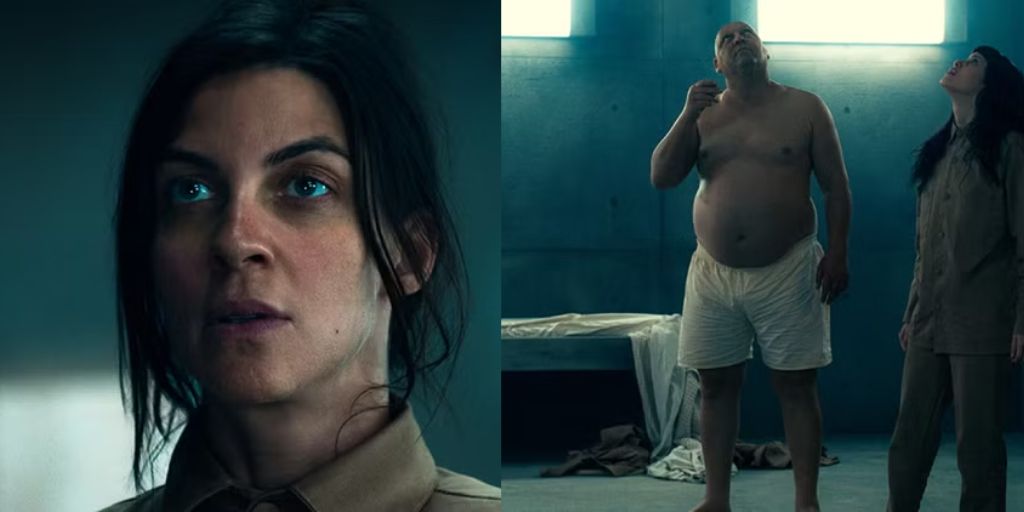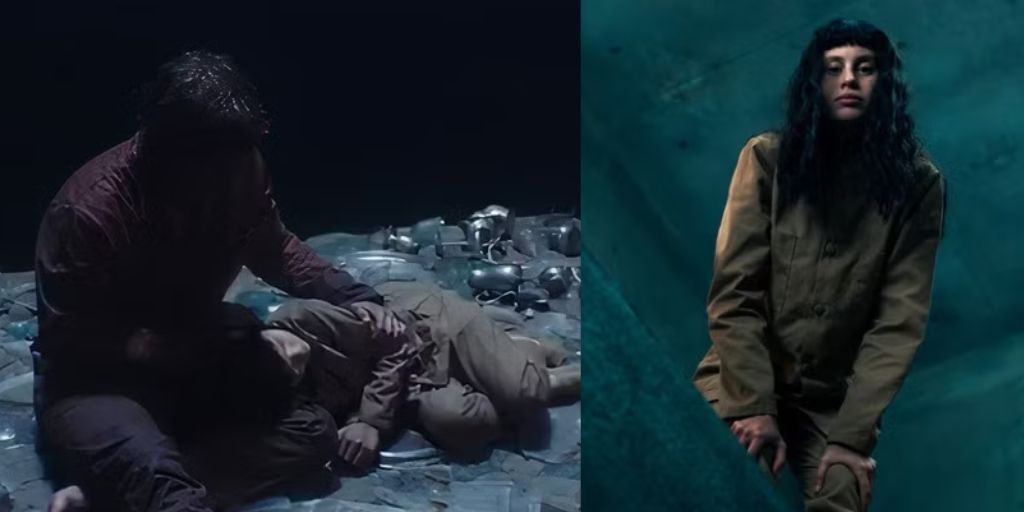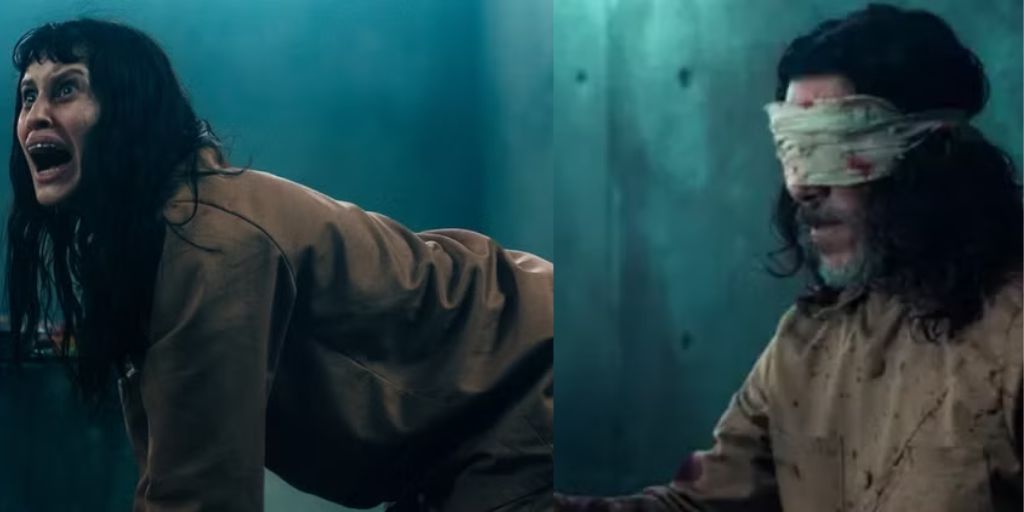The movie The Platform, directed by Galder Gaztelu-Urrutia, captured the audience’s attention and became one of Netflix’s most-watched original films during the pandemic in 2020. Its unique premise and thought-provoking themes struck a chord with viewers around the world.
The film shows life in a dystopian world where a vertical prison system forces inmates to confront the harsh realities of survival and human nature. Due to its popularity and critical acclaim, a sequel felt inevitable, leading to the release of The Platform 2.
Set in the same unsettling environment, The Platform 2 continues to show deep social themes while introducing new characters and challenges. The franchise attract audiences with its thrilling narrative and allegorical elements, addressing critical issues such as capitalism, class struggle, and moral dilemmas.
The Premise of The Platform
In The Platform, inmates reside in a vertical self-management center known as the “pit.” Each month, they awaken on different floors of this structure, which contains numerous levels stacked on top of each other. Each day, a platform filled with food descends from the top level, stopping for two minutes on each floor.
The inmates at the top enjoy abundant meals, while those at the bottom struggle to get by, often leading to desperation and chaos as they fight for survival.
The first film goes into themes of capitalism and political power dynamics, illustrating how those at the bottom are powerless to influence those above them. It delivers a poignant message about inequality and the harsh realities of a society driven by greed.
Showing The Platform 2
The Platform 2 maintains a similar structure to its predecessor, presenting a fresh narrative through the eyes of a new protagonist, Perempuán (played by Milena Smit).
The sequel retains the chilling atmosphere of the original while expanding on the complexities of the characters and their motivations. The film introduces a crucial theme: how strict adherence to rules can lead to unintended consequences and even violence.
Unlike the original, the characters in The Platform 2 demonstrate a more disciplined attitude, showcasing how far people are willing to go to survive within a flawed system.
Each prisoner is allowed to choose a single meal before entering the pit, and that meal becomes their only option during their time in the tower. This structure emphasizes the rigidity of their situation and the consequences of deviating from established norms.
Perempuán’s experiences unfold as she shows this harsh environment, revealing the psychological and physical challenges the inmates face. Her journey highlights the struggle for power and survival within the confines of the tower, setting the stage for a gripping scheme of human nature.
Perempuán’s Journey and Character Development
Perempuán is introduced as a character with a troubled past. Early on, she reveals her reason for being in the pit: to seek forgiveness for the tragic death of her ex-boyfriend’s son.
The boy died after one of her sculptures fell on him, and she carries the weight of guilt with her. This backstory adds depth to her character and sets the tone for her emotional journey throughout the film.
As Perempuán adjusts to life in the tower, she forms relationships with her cellmates, including Sahabat (played by Natalia Tena). Sahabat serves as a mentor figure, guiding Perempuán through the challenges they face. Together, they show the implications of their situation, questioning the system that confines them.
Sahabat shares a critical perspective on the flaws of their environment, explaining that her old cellmate was punished severely for sharing food with a starving child.
This story illustrates the harsh realities of their existence and the brutal enforcement of rules that dictate their survival. Sahabat’s idea of the “drowning dog” symbolizes their hope for escape, pushing Perempuán to join her in a quest to find it.
The Dangers of Strict Rules
One of the most significant themes in The Platform 2 is the danger of strict rules and regulations. The film critiques how a rigid system can dehumanize individuals, stripping them of empathy and morality. The inmates’ experiences showcase how strict adherence to rules can lead to violence and suffering.

As Perempuán and Sahabat shows the tower, they encounter various inmates with differing attitudes towards the system.
Some, like Trimagasi (played by Zorion Eguileor), openly defy the rules and take what they want from the platform. This attitude presents a stark contrast to the more disciplined approach of others, highlighting the tension between conformity and rebellion.
Trimagasi’s lack of respect for the rules demonstrates the potential for chaos in an environment where survival is at stake.
He becomes an influential figure for Perempuán, encouraging her to challenge the established order and join the “barbarians,” those who resist the system. This rebellion against the tower’s laws becomes a central conflict in the film, driving the narrative forward.
The Twist: A Prequel Reveal
One of the most shocking twists in The Platform 2 is the revelation that it serves as a prequel to the original film. When Perempuán’s new roommate is revealed to be Trimagasi from the first movie, viewers realize they are witnessing his first month in the pit. This twist adds layers of complexity to the narrative, allowing audiences to draw connections between the two films.
Trimagasi’s character embodies a carefree attitude towards the rules, openly indulging in the food provided on the platform. His willingness to break the rules sets the stage for Perempuán’s transformation as she shows her morality and desires. Their alliance symbolizes a rebellion against the oppressive system, and together, they rally other inmates to join their cause.
The discovery of the “drowning dog,” which turns out to be a painting, marks a turning point in the narrative. As the characters engage in a battle between the “barbarians” and the “loyalists,” the film intensifies, highlighting the consequences of rebellion against authority. This conflict culminates in a bloodbath that serves as a critique of how societal structures can lead to violence and chaos when pushed to their limits.
The Symbolism of Children in The Platform 2
Children play a significant role in The Platform 2, symbolizing hope and the future. Perempuán’s motivation to forgive herself ties directly to her encounter with a child in the pit. Early in the film, she expresses her desire for redemption, emphasizing that her journey is about more than just survival; it is about making amends for past mistakes.
The imagery of children playing on a large pyramid structure recurs throughout the film. This visual motif raises questions about the presence of children within the platform and what their existence represents. The ambiguity surrounding their role adds an unsettling layer to the narrative, forcing viewers to grapple with the implications of childhood innocence in a brutal world.
As the film progresses, Perempuán’s decision to save a child highlights her moral compass in the face of chaos. When she sees cleaners preparing to strap a child to a bed, she makes the choice to intervene, showcasing her empathy and humanity. This act of kindness becomes a pivotal moment in the film, reinforcing the importance of compassion even in dire circumstances.
However, her attempt to rescue the child ultimately leads to her injury, illustrating the harsh realities of their environment.
The film concludes with Perempuán sitting over the child on the platform at the pit’s base, echoing the ambiguous ending of the first film. This circular narrative reinforces the theme of cycles within the story, where hope and despair coexist.
The Ambiguous Ending and Unanswered Questions
The ending of The Platform 2 is deliberately ambiguous, leaving viewers with many unanswered questions. This open-ended conclusion invites interpretations and discussions among audiences.
As Perempuán confronts her fate and the implications of her choices, the film reflects on the complexities of human nature and the struggle for meaning in a chaotic world.
The cameo appearance of Miharu (played by Alexandra Masangkay), who chooses which child goes on level 333, adds another layer of mystery.
Her presence raises questions about the role of children within the tower and how their lives are manipulated by the system. The ambiguity surrounding her actions reinforces the film’s commentary on power dynamics and societal structures.
The final moments of the film blur the line between reality and hallucination, leaving viewers questioning the nature of Perempuán’s experiences.
The mid-credits scene, featuring Goreng reaching the base of the pit with a child, implies a connection between the two protagonists. Their embrace suggests a reunion that transcends time and reality, inviting speculation about the nature of their relationship.
Themes of Social Justice and Human Nature
At its core, The Platform 2 serves as a commentary on social justice and the nature of humanity. The film show how individuals respond to oppressive systems and the lengths they will go to achieve change.
Perempuán’s journey embodies the struggle for redemption, highlighting the importance of empathy and compassion in a world dominated by self-interest.
The presence of children in the narrative underscores the idea that social change is essential for future generations.

The film suggests that the fight for justice is not just about individual survival but also about creating a better world for those who come after. This theme resonates deeply, reminding audiences of the responsibility they hold towards future generations.
Conclusion: The Future of The Platform Franchise
As The Platform 2 concludes, viewers are left with a mix of emotions and reflections on the themes presented. The film challenges perceptions of morality, power, and survival in a brutal society.
With its complex characters and thought-provoking narrative, The Platform 2 expands on the original film while inviting audiences to engage in discussions about its meaning.
While a third installment has not been confirmed, the ambiguity and open-ended nature of the story leave room for further scheme. The franchise has successfully sparked conversations about human nature, societal structures, and the consequences of our choices.
As viewers continue to dissect the themes and symbols within the series, The Platform remains a powerful commentary on the complexities of life, reminding us of the importance of empathy and the pursuit of justice.
The Platform 2 is available to stream on Netflix, inviting new audiences to experience the gripping narrative and the compelling questions it raises about humanity and society.




